Vertical Cabbage Gardening: Imagine harvesting plump, juicy cabbages from a thriving garden, even if you only have a tiny balcony or patio! Sounds too good to be true? It’s not! I’m here to show you how to maximize your yield and minimize your space with the magic of vertical cabbage gardening.
For centuries, gardeners have sought innovative ways to cultivate their crops. From the hanging gardens of Babylon to the ingenious terrace farming techniques in the Andes, the desire to grow food in limited spaces has always driven creativity. While vertical gardening itself isn’t new, applying it specifically to cabbage opens up a world of possibilities for urban dwellers and those with limited garden plots.
Why should you embrace this DIY trick? Well, let’s face it, traditional cabbage patches can be space hogs! Plus, they’re often susceptible to soil-borne pests and diseases. Vertical cabbage gardening offers a fantastic solution to these problems. By growing your cabbages upwards, you’ll save valuable ground space, improve air circulation (reducing the risk of fungal diseases), and even make harvesting easier on your back! Ready to ditch the traditional row and embrace a more efficient and visually stunning way to grow your own delicious cabbages? Let’s get started!
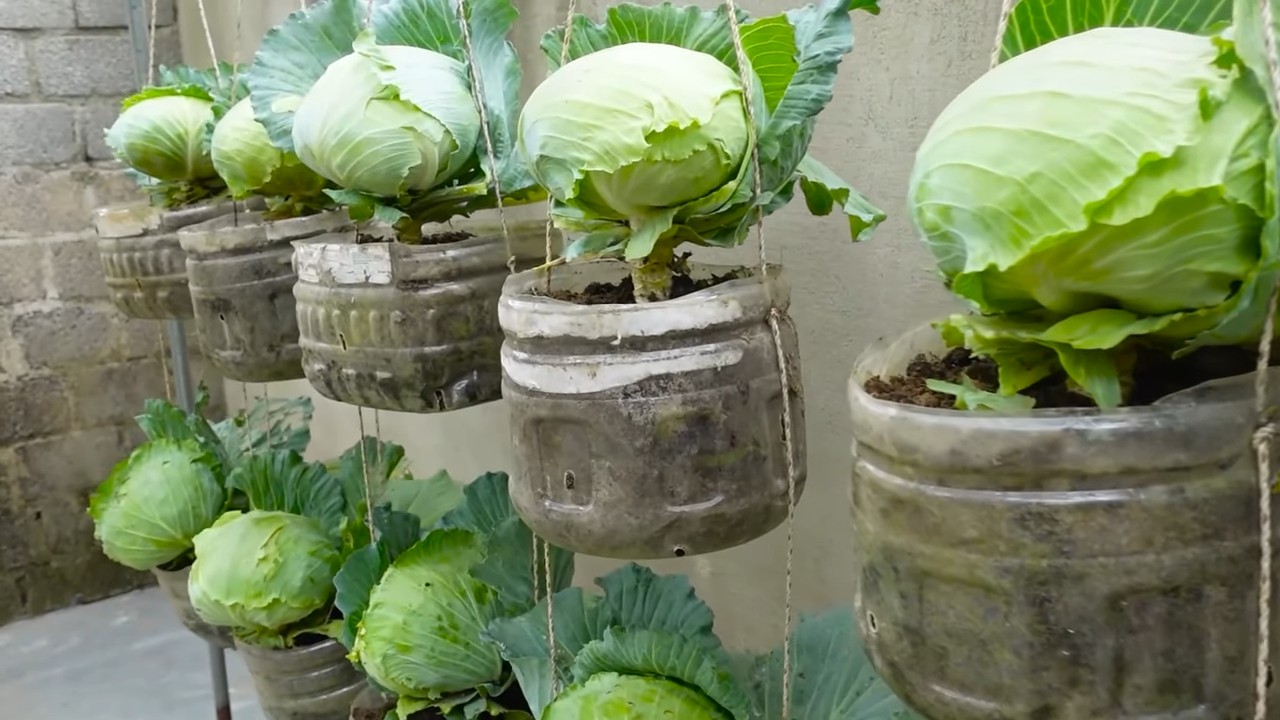
DIY Vertical Cabbage Garden: Maximize Space, Maximize Harvest!
Hey there, fellow gardening enthusiasts! Are you dreaming of a bountiful cabbage harvest but short on space? Well, I’ve got just the project for you: a DIY vertical cabbage garden! This ingenious setup lets you grow a surprising amount of cabbage in a small footprint, perfect for balconies, patios, or even just a sunny corner of your yard. I’m going to walk you through every step, so even if you’re a beginner, you can create your own thriving vertical cabbage patch.
What You’ll Need: The Shopping List
Before we dive in, let’s gather our supplies. This project is relatively inexpensive, and you might even have some of these items lying around!
* A sturdy container: This is the foundation of your vertical garden. I recommend a large plastic storage tote (around 20-30 gallons) or a similar-sized container. Make sure it’s food-grade plastic if possible.
* PVC pipe: You’ll need a length of PVC pipe, typically 4-6 inches in diameter, depending on how many cabbage plants you want to grow. The length will depend on the height you want your vertical garden to be. I usually go for about 4-5 feet.
* Drill and hole saw: A drill is essential for creating drainage holes and holes for the cabbage plants. A hole saw attachment (the size will depend on the size of your cabbage seedlings, usually 2-3 inches) will make clean, even holes.
* Potting mix: Use a high-quality potting mix that drains well. Cabbage needs rich soil, so avoid using garden soil directly.
* Cabbage seedlings: Choose your favorite cabbage varieties! I like to mix it up with green, red, and Savoy cabbage.
* Landscape fabric or burlap: This will line the inside of the PVC pipe to prevent soil from washing out.
* Gravel or rocks: For drainage at the bottom of the container.
* Measuring tape or ruler: For accurate hole placement.
* Permanent marker: To mark the drilling locations.
* Gloves: To protect your hands.
* Safety glasses: Always protect your eyes when drilling!
* Zip ties or strong twine: To secure the landscape fabric or burlap inside the PVC pipe.
* Watering can or hose: For watering your cabbage plants.
* Fertilizer: A slow-release fertilizer formulated for vegetables will give your cabbage plants a boost.
Phase 1: Preparing the Container and PVC Pipe
This phase is all about getting the foundation of your vertical garden ready.
1. Drill drainage holes in the container: Flip your container upside down and drill several drainage holes (about 1/2 inch in diameter) in the bottom. This is crucial to prevent waterlogging, which can rot the roots of your cabbage plants. I usually drill about 10-12 holes, evenly spaced.
2. Add a layer of gravel or rocks: Pour a 2-3 inch layer of gravel or rocks into the bottom of the container. This will further improve drainage and prevent the potting mix from clogging the drainage holes.
3. Prepare the PVC pipe: Now, let’s get the PVC pipe ready. This is where the magic happens!
* Measure and mark the holes: Decide how many cabbage plants you want to grow on each side of the pipe. I usually space them about 8-10 inches apart, staggering them on each side for maximum sunlight exposure. Use your measuring tape and permanent marker to mark the locations for the holes. Make sure the holes on one side are offset from the holes on the other side. This will give your cabbage plants more room to grow.
* Drill the holes: Put on your safety glasses! Using your drill and hole saw attachment, carefully drill the holes at the marked locations. Take your time and apply even pressure. Be careful not to drill too quickly, as this can cause the plastic to crack.
* Line the PVC pipe: Cut a piece of landscape fabric or burlap that is slightly longer than the PVC pipe and wide enough to wrap around the inside. Secure it to the inside of the pipe using zip ties or strong twine. This will prevent the potting mix from washing out through the holes. Make sure the fabric is securely attached, but don’t block the holes completely.
Phase 2: Assembling the Vertical Garden
Now comes the fun part: putting everything together!
1. Position the PVC pipe: Place the PVC pipe in the center of the container, standing upright. Make sure it’s stable and secure. You might want to add some extra rocks or gravel around the base of the pipe to help stabilize it.
2. Fill the container with potting mix: Slowly add potting mix to the container, filling it around the PVC pipe. As you fill, gently pack the soil around the base of the pipe to provide support.
3. Fill the PVC pipe with potting mix: Now, carefully fill the PVC pipe with potting mix, making sure to pack it down gently. This will provide a growing medium for the roots of your cabbage plants.
Phase 3: Planting Your Cabbage Seedlings
Time to get those cabbage seedlings in their new home!
1. Prepare the planting holes: Gently create a small indentation in the potting mix at each hole in the PVC pipe. This will make it easier to plant the seedlings.
2. Plant the cabbage seedlings: Carefully remove the cabbage seedlings from their containers. Gently loosen the roots and place each seedling in a hole. Make sure the top of the root ball is level with the surrounding soil.
3. Fill in with potting mix: Fill in around the seedlings with potting mix, gently packing it down.
4. Water thoroughly: Water the entire vertical garden thoroughly, making sure the potting mix is evenly moist.
Phase 4: Caring for Your Vertical Cabbage Garden
Now that your vertical cabbage garden is planted, it’s important to provide proper care to ensure a healthy and bountiful harvest.
1. Watering: Cabbage needs consistent moisture, so water your vertical garden regularly, especially during hot, dry weather. Check the soil moisture by sticking your finger into the soil. If the top inch feels dry, it’s time to water. Water deeply, allowing the water to drain out of the drainage holes. Avoid overwatering, as this can lead to root rot.
2. Fertilizing: Cabbage is a heavy feeder, so fertilize your vertical garden regularly with a slow-release fertilizer formulated for vegetables. Follow the instructions on the fertilizer package. You can also supplement with liquid fertilizer every few weeks.
3. Sunlight: Cabbage needs at least 6 hours of sunlight per day, so place your vertical garden in a sunny location. If you live in a particularly hot climate, you may need to provide some afternoon shade to prevent the leaves from scorching.
4. Pest control: Keep an eye out for pests, such as cabbage worms, aphids, and slugs. Handpick any pests you find or use an organic insecticide if necessary. You can also use row covers to protect your cabbage plants from pests.
5. Weeding: Remove any weeds that pop up in the container or PVC pipe. Weeds can compete with your cabbage plants for nutrients and water.
6. Support: As your cabbage plants grow, they may become top-heavy. You may need to provide some support to prevent them from falling over. You can use stakes or twine to support the plants.
Troubleshooting Tips
Even with the best care, you might encounter some challenges. Here are a few common issues and how to address them:
* Yellowing leaves: This could be a sign of overwatering, underwatering, or nutrient deficiency. Check the soil moisture and adjust your watering schedule accordingly. Fertilize with a balanced fertilizer.
* Slow growth: This could be due to lack of sunlight, poor soil, or pest infestation. Make sure your vertical garden is in a sunny location and fertilize regularly. Check for pests and take appropriate action.
* Root rot: This is caused by overwatering. Make sure your container has adequate drainage and avoid overwatering.
* Cabbage worms: These pesky caterpillars can devour your cabbage leaves. Handpick them or use an organic insecticide like Bacillus thuringiensis (Bt).
Harvesting Your Cabbage
The moment you’ve been waiting for! Your cabbage is ready to harvest when the heads are firm and compact. The size will vary depending on the variety. To harvest, simply cut the head off the plant with a sharp knife, leaving the outer leaves intact. You can often get a second, smaller harvest from the remaining plant.
Enjoy your homegrown cabbage in salads, slaws, soups, and stir-fries! I hope you found this guide helpful. Happy gardening!
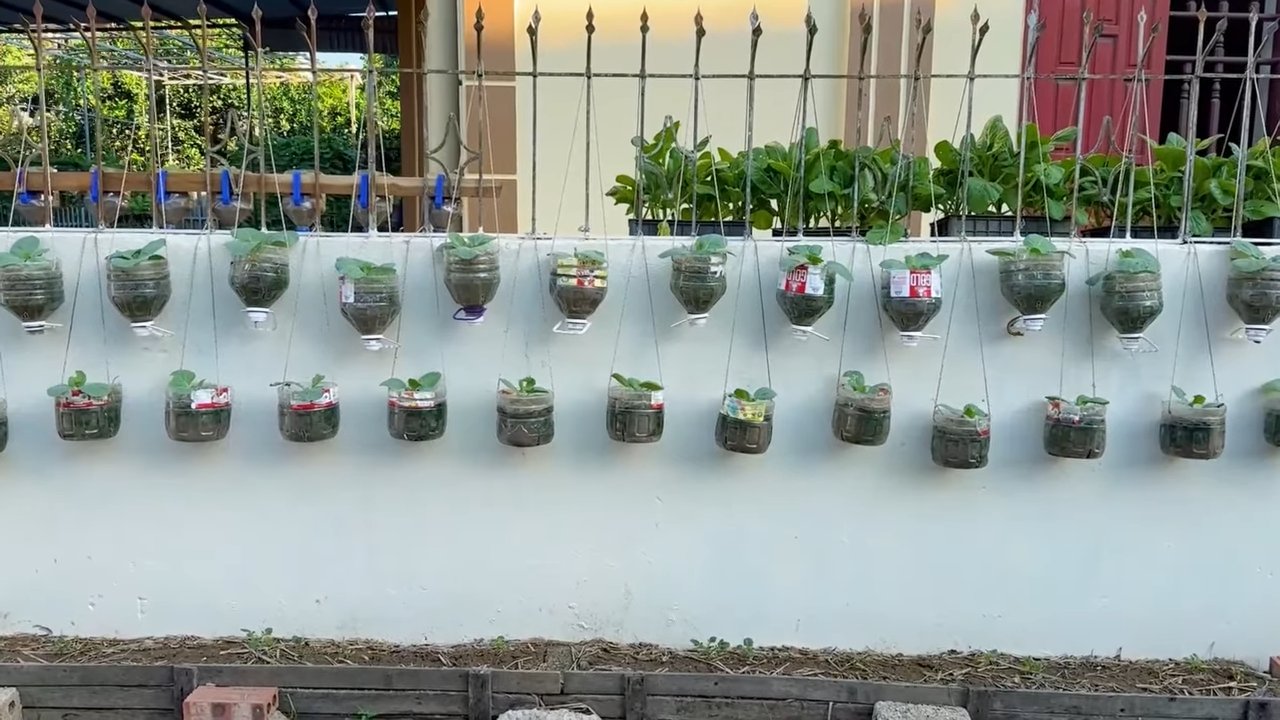
Conclusion
So, there you have it! Vertical cabbage gardening isn’t just a quirky trend; it’s a game-changer for anyone looking to maximize their garden space, minimize pests, and enjoy a bountiful harvest of fresh, crisp cabbage. We’ve explored the ins and outs of this innovative technique, from choosing the right container and soil to providing the necessary support and care for your leafy greens.
Why is this a must-try? Because it’s efficient, aesthetically pleasing, and incredibly rewarding. Imagine a wall of vibrant green cabbage heads, thriving in a space that would otherwise be unused. Think of the reduced back strain from not having to bend over constantly to tend to your plants. And consider the satisfaction of harvesting your own homegrown cabbage, knowing you’ve nurtured it from seed to table using a sustainable and space-saving method.
But the beauty of vertical cabbage gardening lies in its adaptability. Feel free to experiment with different varieties of cabbage. Red cabbage, savoy cabbage, or even Chinese cabbage can all thrive in a vertical setup. You can also incorporate companion plants like marigolds or nasturtiums to deter pests and add a splash of color to your vertical garden. Consider adding a simple drip irrigation system to automate watering and ensure consistent moisture levels, especially during hot summer months. For those in colder climates, think about using a portable vertical system that can be moved indoors during the winter to extend your growing season.
Don’t be afraid to get creative with your container choices, too. While we’ve discussed using stacked planters and repurposed pallets, you can also explore options like hanging baskets, repurposed rain gutters, or even DIY fabric planters. The key is to ensure adequate drainage and provide enough space for the cabbage roots to develop.
Ultimately, vertical cabbage gardening is about embracing innovation and finding new ways to connect with nature. It’s about transforming small spaces into thriving ecosystems and enjoying the fruits (or rather, vegetables) of your labor.
We wholeheartedly encourage you to give this DIY trick a try. Start small, experiment with different techniques, and don’t be discouraged by initial setbacks. Gardening is a learning process, and every mistake is an opportunity to grow (pun intended!).
Most importantly, we want to hear about your experiences! Share your photos, tips, and challenges in the comments section below. Let’s build a community of vertical cabbage gardeners and inspire others to embrace this innovative and rewarding technique. Your insights could be invaluable to someone just starting out, and together, we can unlock the full potential of vertical cabbage gardening. So, grab your seeds, your soil, and your enthusiasm, and let’s get growing!
Frequently Asked Questions (FAQ)
What type of cabbage grows best vertically?
While most cabbage varieties can be grown vertically, some tend to thrive more than others. Smaller, more compact varieties like ‘Dwarf Blue Vates’ or ‘Golden Acre’ are particularly well-suited for vertical gardening due to their manageable size and relatively quick growth cycle. These varieties won’t become overly heavy or unwieldy, making them easier to support in a vertical system. However, don’t let that limit you! Experiment with other varieties like red cabbage or savoy cabbage, but be prepared to provide extra support as they mature. Consider the size and weight of the mature head when selecting your variety.
How much sunlight does vertical cabbage need?
Cabbage, like most leafy greens, requires at least 6 hours of direct sunlight per day to thrive. When planning your vertical garden, choose a location that receives ample sunlight throughout the day. If you’re in a particularly sunny climate, you might need to provide some afternoon shade to prevent the leaves from scorching. Conversely, if you’re in a less sunny area, consider using grow lights to supplement natural sunlight and ensure your cabbage receives the energy it needs to grow. Observe your plants closely and adjust their position as needed to optimize sunlight exposure.
What type of soil is best for vertical cabbage gardening?
Cabbage prefers well-draining, fertile soil that is rich in organic matter. A good potting mix specifically formulated for vegetables is an excellent choice. You can also amend your own soil by mixing equal parts of compost, peat moss, and perlite or vermiculite. The compost will provide essential nutrients, the peat moss will help retain moisture, and the perlite or vermiculite will improve drainage. Avoid using heavy clay soil, as it can become waterlogged and suffocate the roots. Before planting, test the soil pH and adjust it to between 6.0 and 7.0, which is ideal for cabbage growth.
How often should I water my vertical cabbage garden?
Watering frequency will depend on several factors, including the weather, the type of container you’re using, and the size of your cabbage plants. As a general rule, water deeply whenever the top inch of soil feels dry to the touch. Avoid overwatering, as this can lead to root rot. Vertical gardens tend to dry out more quickly than traditional gardens, so check the soil moisture regularly, especially during hot or windy weather. Consider using a drip irrigation system or self-watering containers to ensure consistent moisture levels. Mulching around the base of the plants can also help retain moisture and suppress weeds.
How do I fertilize my vertical cabbage plants?
Cabbage is a heavy feeder and requires regular fertilization to produce large, healthy heads. Start by incorporating a slow-release fertilizer into the soil at planting time. Then, supplement with a liquid fertilizer every 2-3 weeks throughout the growing season. Choose a fertilizer that is high in nitrogen, which promotes leafy growth. You can also use organic fertilizers like compost tea or fish emulsion. Avoid over-fertilizing, as this can lead to excessive foliage growth at the expense of head development. Follow the instructions on the fertilizer label carefully and adjust the dosage as needed based on the plant’s growth.
How do I protect my vertical cabbage from pests and diseases?
Vertical gardening can help reduce pest and disease problems by improving air circulation and reducing soil contact. However, cabbage is still susceptible to certain pests like cabbage worms, aphids, and flea beetles. Regularly inspect your plants for signs of infestation and take action promptly. Handpicking pests, using insecticidal soap, or applying Bacillus thuringiensis (Bt) are effective control methods. To prevent diseases, ensure good air circulation, avoid overwatering, and remove any infected leaves promptly. Crop rotation and companion planting can also help reduce pest and disease pressure.
Can I grow cabbage vertically indoors?
Yes, you can grow cabbage vertically indoors, but you’ll need to provide adequate light and ventilation. Choose a sunny location near a window or use grow lights to supplement natural sunlight. Ensure good air circulation to prevent fungal diseases. Indoor cabbage may require more frequent watering and fertilization than outdoor cabbage. Select smaller, more compact varieties that are well-suited for container gardening. Be prepared to hand-pollinate the flowers if you want to save seeds.
How long does it take for cabbage to mature in a vertical garden?
The time it takes for cabbage to mature will depend on the variety, the growing conditions, and the climate. Generally, cabbage takes between 60 and 100 days to mature from seed. Shorter-season varieties will mature more quickly, while longer-season varieties will take longer. Monitor your plants closely and harvest them when the heads are firm and compact. Don’t wait too long to harvest, as the heads can split if they become overripe.
What are some companion plants for vertical cabbage?
Companion planting can help improve the health and productivity of your vertical cabbage garden. Some good companion plants for cabbage include marigolds, nasturtiums, dill, rosemary, and thyme. Marigolds and nasturtiums deter pests like cabbage moths and aphids. Dill attracts beneficial insects that prey on cabbage pests. Rosemary and thyme repel cabbage white butterflies. Avoid planting cabbage near members of the nightshade family, such as tomatoes, peppers, and eggplants, as they can compete for nutrients and attract similar pests.
How do I harvest my vertical cabbage?
Harvest your cabbage when the heads are firm and compact. Use a sharp knife to cut the head from the stem, leaving a few outer leaves intact. You can harvest the entire head at once or harvest individual leaves as needed. After harvesting the main head, you may be able to harvest smaller side shoots that develop along the stem. Store harvested cabbage in the refrigerator for up to several weeks.


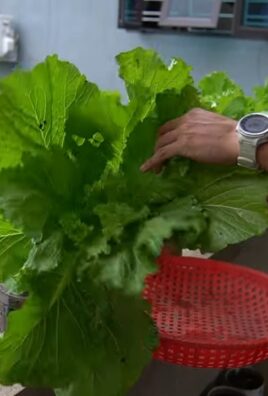
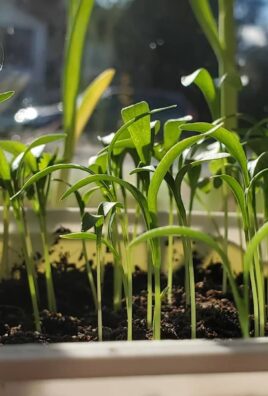
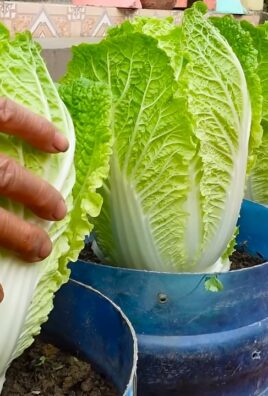
Leave a Comment